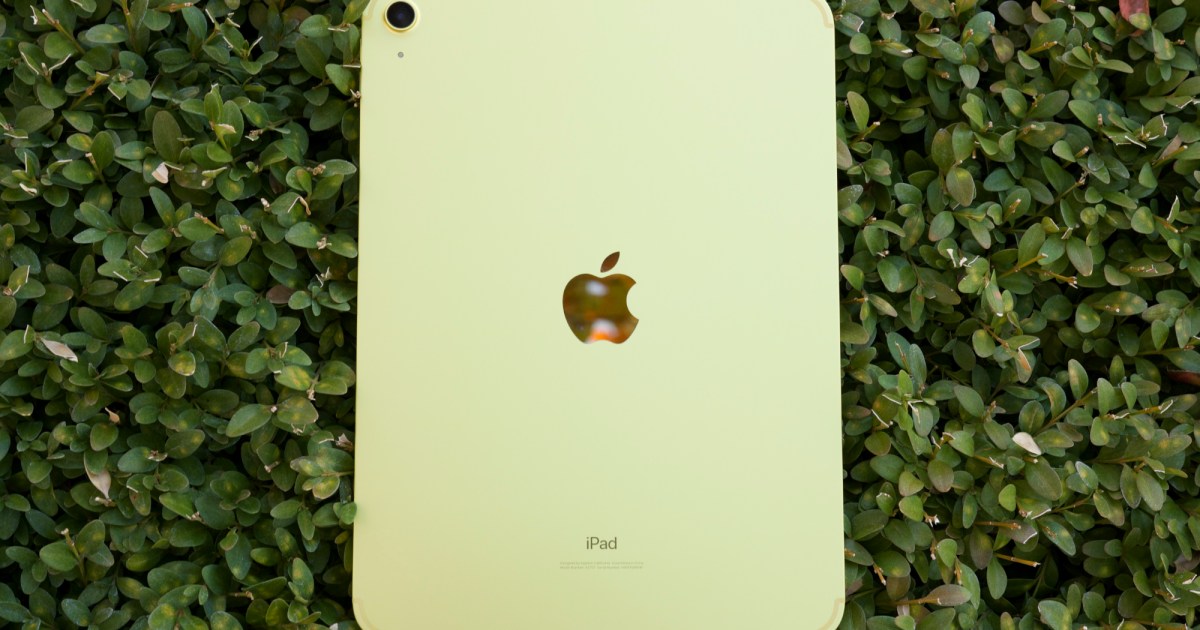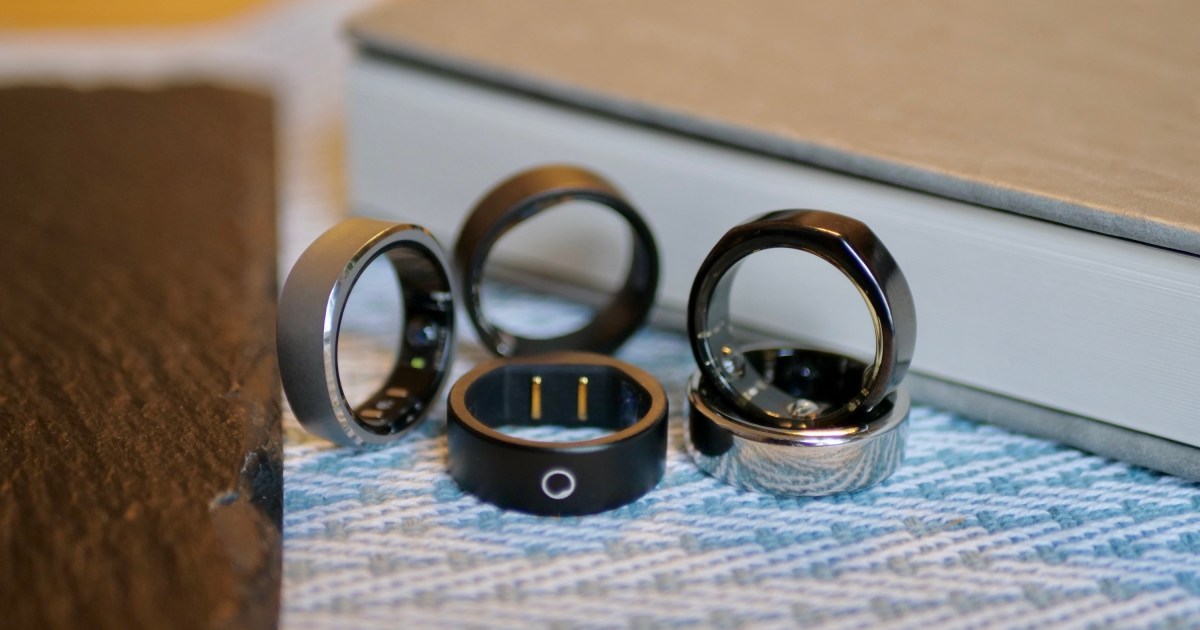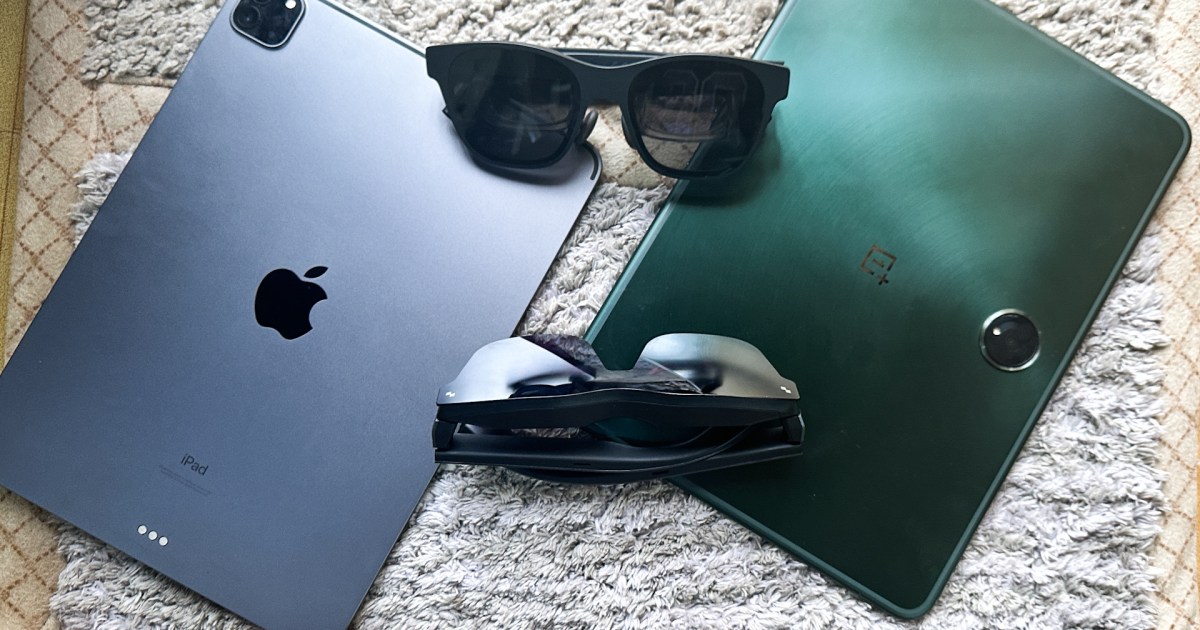
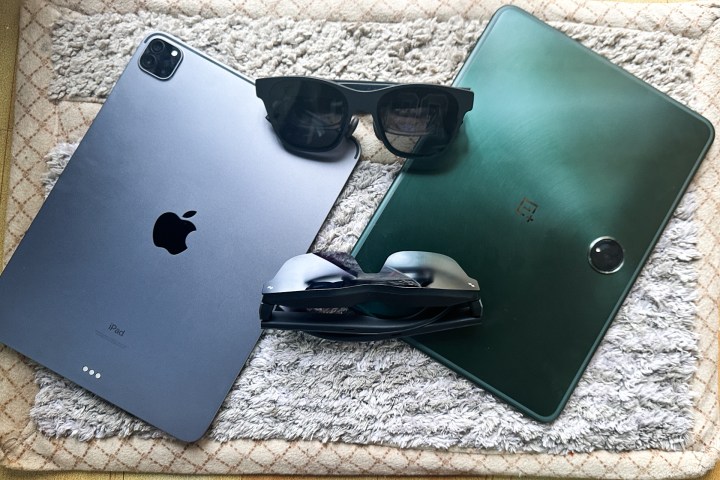
When Apple introduced its overtly costly Imaginative and prescient Professional AR headset, arguably its greatest promise had little to do with {hardware}. The corporate says “tons of and hundreds of iPhone and iPad apps” run nicely on Imaginative and prescient OS, and they are going to be able to boot on the Imaginative and prescient Professional on launch day.
Apple made an ever greater promise to builders. “By default, your iPad and/or iPhone apps will probably be revealed routinely on the App Retailer on Apple Imaginative and prescient Professional,” the corporate mentioned. That’s akin to fixing the most important downside for an experimental class of {hardware}.
Apple gained’t be the primary to aim AR/VR {hardware}. Removed from it, really. The likes of Google have failed, whereas Meta nonetheless persists with its Quest vary. Then we now have XR glasses from the likes of Xreal and TCL. I lately examined the Xreal Air 2 with my iPad Professional and got here out impressed.
Sadly, the expertise of utilizing AR glasses on tablets isn’t uniform throughout the Apple and Android ecosystems. The gulf is a bit too broad in some situations.
An endgame proper on the doorstep
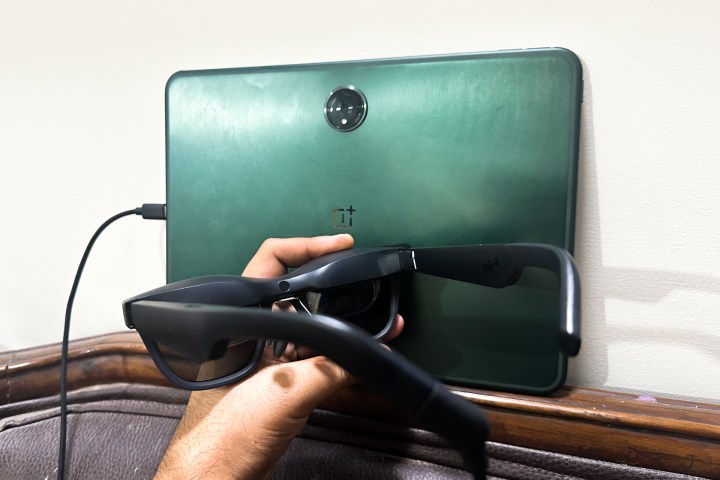
I’ll begin with compatibility and ease of entry. I examined the Xreal Air 2 and the RayNeo Air 2, pairing them with the iPad Professional and the OnePlus Pad. To make clear. AR glasses are basically glorified secondary screens that sit in your nostril.
The important thing to getting AR glasses to work with a pill is a USB-C port that helps DisplayPort output. All iPads with a USB-C port assist DisplayPort. Some even throw in Thunderbolt assist, which permits the pill to drive high-resolution displays.
However so far as AR glasses are involved, most of which restrict themselves to the Full HD per eye decision, the usual DisplayPort Alt Mode operate is sufficient. However the scenario is a tad complicated. Solely a handful of Android tablets, such because the current additions to the high-end Samsung Galaxy Tab S sequence, assist DisplayPort output.
After I plugged the Xreal Air 2 into the OnePlus Pad’s USB-C port, I bumped into an incompatible {hardware} error. A fast have a look at the Xreal web site exhibits not a single pill within the record of appropriate {hardware}. Utilizing an adapter didn’t provide any assist.

Within the case of the RayNeo Air 2 glasses, the OnePlus Pad merely didn’t learn them. As I discussed above, solely high-end Samsung tablets assist DisplayPort over USB-C output. A couple of different manufacturers make flagship Android tablets, however none of them can be found within the U.S.
On the iPad Professional, as quickly as I plugged within the Xreal and RayNeo AR glasses, the show unit routinely went into prolonged display mode with Stage Supervisor enabled. With the faucet of a button, you possibly can change to screen-mirroring format. However should you’re holding the iPad in a vertical orientation, it routinely indicators the AR glasses to set off screen-mirroring mode. These neat little conveniences really matter and encourage you to dive into new experiences.
On one hand, you could have the Apple tablets — throughout the mainline, Air, and Professional vary — prepared for AR glasses and beginning at $449. If you’ll find refurbished models, that’s even higher. However, Android tablets are restricted in availability, providing extraordinarily restricted compatibility and a smaller life span by way of software program replace assist.
The basic firepower query

Earlier than I get into the main points of AR experiences, let’s deal with the {hardware} scenario first. The likes of the RayNeo Air 2 or Xreal Air 2 don’t include their very own computing or graphics processing package; your cellphone or pill supplies all of the juice.
So far as primary duties like net shopping and streaming, any pill on the market, iPad or Android, is up for the job. However the second you get into video games, you begin seeing a distinction. And should you’re utilizing a compatibility hack, that have is much more obvious.
Let’s begin with the hack, which is actually a distant screen-mirroring hub. For the Xreal Air 2, you get the Beam. With the RayNeo Air 2, the corporate sells you a MiraScreen pocket system. Each are standalone purchases and value over $100 every.
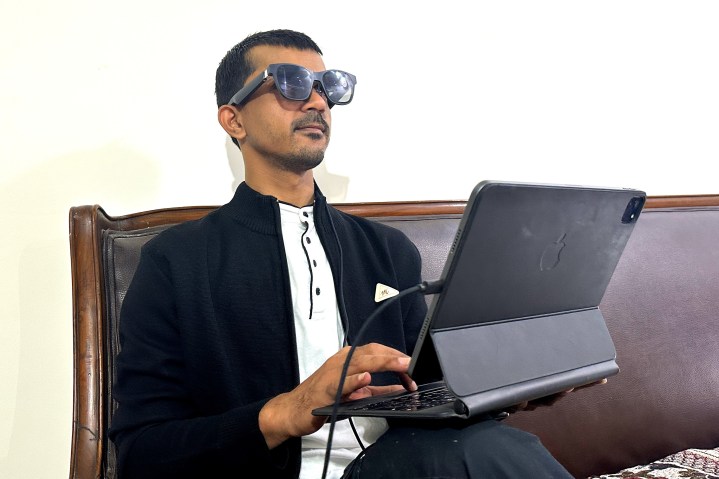
In case your incompatible pill doesn’t assist direct display casting through a USB-C port, which is more than likely the case for an Android slate, it’s good to plug the glasses into this hub. Subsequent, utilizing Bluetooth/Wi-Fi, it’s good to join this hub wirelessly to the Android pill in your hand.
As soon as the pairing is completed, you’re good to go. Your Android cellphone’s UI will now mirror on the AR glasses’ show unit. It’s an costly trouble, however the one street forward. When you’re into taking part in video games, you run into one other downside.
That downside is processor firepower. The OnePlus Pad options the MediaTek Dimensity 9000 chip. It will probably’t fairly compete with the entry-level iPad (and its A13 chip) for a few causes in terms of gaming — and positively not with any M-series processor contained in the iPad Air or Professional.
First, the Dimensity 9000, regardless of its top-tier credentials, can’t fairly maintain its personal in opposition to Apple’s A14 — each in real-life gaming or artificial benchmarks. It gained’t be a limiting think about informal video games, however the second you bounce into one thing like Genshin Impression, you will note it stuttering and downgrading the expertise to decrease graphics settings.
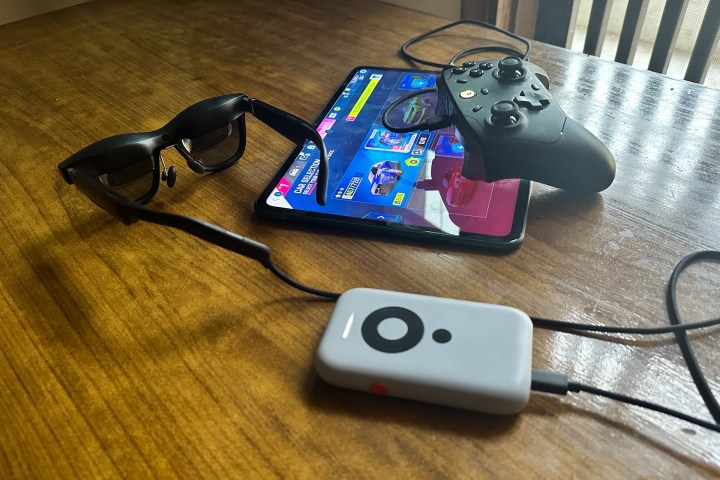
Subsequent, if you’ve paired the AR glasses to an incompatible Android pill through a mirroring hub, understand that it’s a wi-fi lane. Random glitches and lags are obvious. And should you’re somebody who likes to spend time with mates in high-stakes aggressive shooter video games, this answer isn’t for you.
For my gaming comparability, I picked up the perfect controller I may discover to be on the protected aspect. I paired my tablets with the GameSir Cyclone T4 Professional. This one provides Corridor Impact sticks and triggers with extraordinarily excessive accuracy alongside tactile buttons.
Earlier than you immerse your self in gaming on AR glasses, you additionally want to think about that, other than the wi-fi mirroring of a demanding recreation’s UI on an exterior display, there may be the issue of enter when paired with a Bluetooth controller.
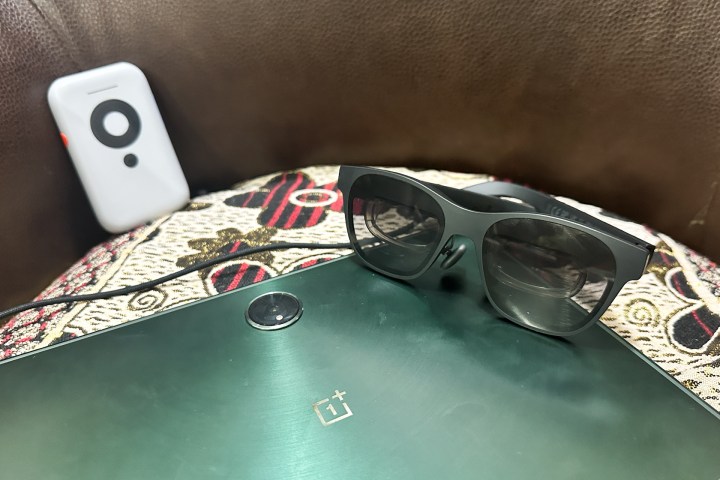
On the iPad, the AR glasses depend on a direct wired connection. Meaning there are little to no visible hiccups or stutters. The Apple silicon exhibits its true colours and simply handles graphics-intensive video games — particularly these within the Apple Arcade library.
It’s additionally price noting that in wired connection mode with the iPad, the Bluetooth lane is free. Meaning you possibly can concurrently join a wi-fi earbud and a gaming controller.
The computing divide
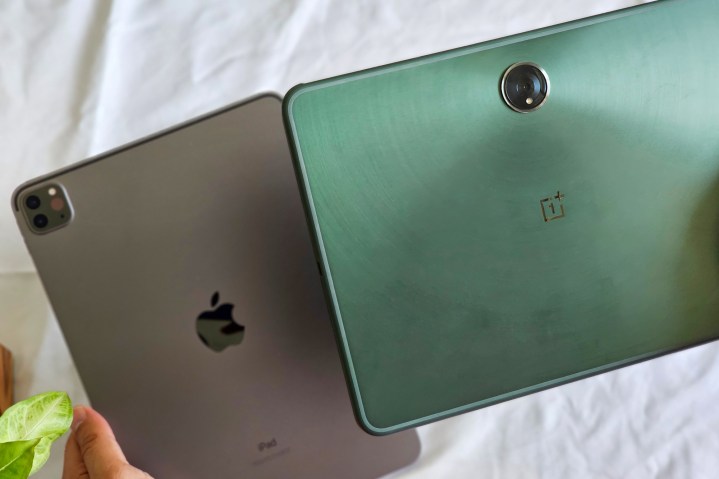
One of many greatest guarantees that each XR model sells is the concept of extra immersive computing. Think about seeing floating desktops round your head, considerably like in a sci-fi flick. Xreal provides Nebula, a software program that surrounds you with three floating desktops. RayNeo additionally provides the power, however permits you to run as much as six digital home windows.
On the cellular aspect, you get no such pizzazz. An argument might be made that tablets usually are not actual computer systems, in order that they don’t want such demanding instruments. However that’s true to solely a sure extent. When you ask me, I’d say “exhausting disagree.”
For the previous two years, the iPad Professional and Samsung Galaxy Tab S gadgets have served as my major computing workhorse. Sure, there are limitations, nevertheless it by no means hurts having a hidden PC-look-alike system on a slate.

Apple provides simply that with Stage Supervisor. Samsung serves you DeX. I’ve used each extensively. In reality, DeX on the Galaxy Z Fold 5 powered a complete 144Hz monitor for 2 weeks of full-fledged work.
However DeX is extra tightly baked into the cellular expertise, whereas Stage Supervisor on iPad feels extra mature and lots nearer to macOS than DeX is to Home windows. Then there’s the query of ecosystem advantages, the place Apple is forward of the Samsung-Home windows bonding.
Other than Samsung tablets, you don’t get a DeX-like computing perk on any Android pill on the market. And the scenario isn’t going to alter anytime quickly for a number of causes. Can a midrange Qualcomm or MediaTek processor deal with one thing like Stage Supervisor, however constructed atop Android foundations?
Possible not. Simply have a look at Apple. The corporate restricted Stage Supervisor to iPads with desktop-class M processors inside, not these with mobile-tier Bionic A-series processors. So far as the software program goes, Apple continues to make sluggish, however regular progress with iPadOS towards a extra computing-friendly future by bringing pro-grade apps to the iPads.
The great, dangerous, and ugly of AR and ecosystems
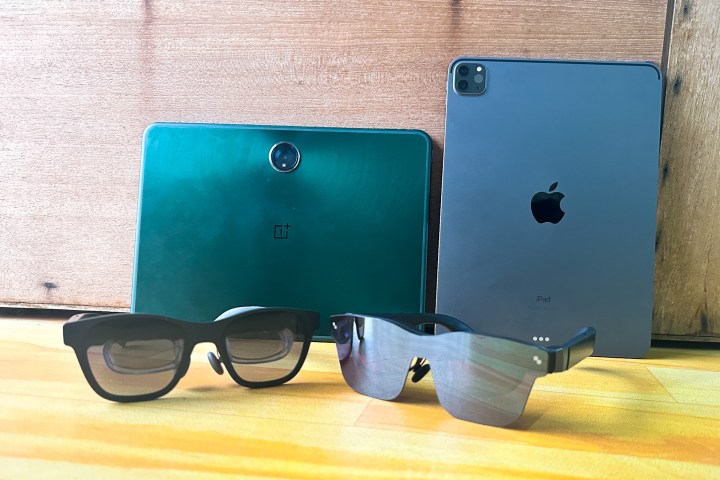
You may assume that AR Glasses usually are not merely right here to reflect the display of your cellphone or pill near your eyes — and I completely agree with the argument. In reality, the shortage of direct assist for iPadOS severely places Apple on the again foot in terms of AR {hardware}. However even with full-fledged compatibility in tow, Android doesn’t fare a lot better.
On the RayNeo Air 2, the AR experiences are largely restricted to prerecorded encompass movies, immersive variations of well-known work, 3D artwork items, and a couple of dozen extraordinarily primary video games which can be completely hit-or-miss. The scenario on the Xreal Air 2 is worse.
There simply aren’t many mobile-focused apps on the market that may present a standout augmented actuality expertise on the cellular ecosystem, be it Android or iOS/iPadOS. That leaves these glasses as nothing greater than wearable secondary displays.
However come 2024, with the arrival of Imaginative and prescient Professional, builders will pour tons of apps into the Apple ecosystem. And with the sort of integrations that Apple has already began constructing the foundations for, it gained’t be stunning to see extra AR apps coming to the App Retailer.
Total, purely from a pill perspective, Apple is in a a lot better place than Android to deal with AR glasses. Furthermore, with a extremely anticipated entry into the world of AR and VR deliberate for 2024, the trade is just going to shift extra within the path of Apple {hardware}.
Editors’ Suggestions
Supply Hyperlink : atyvip24.com

